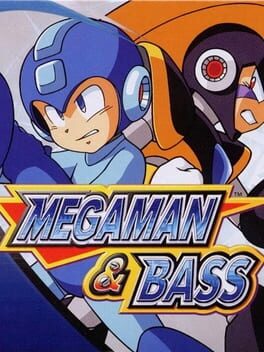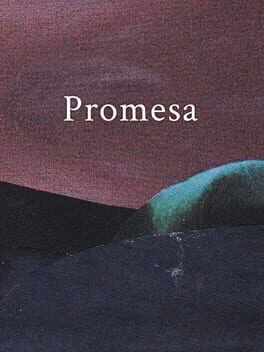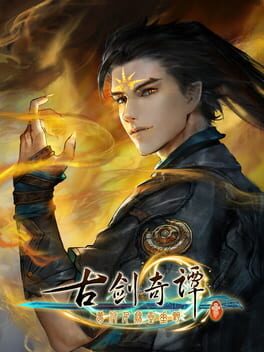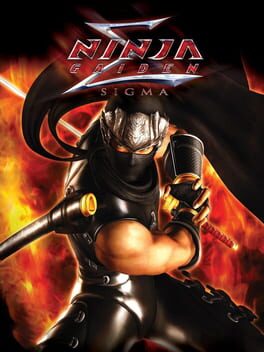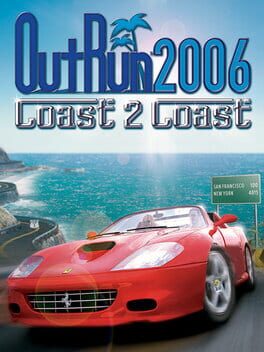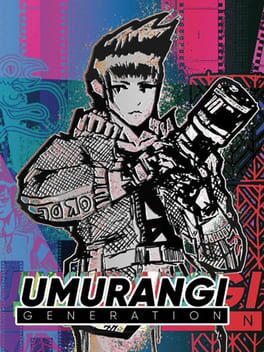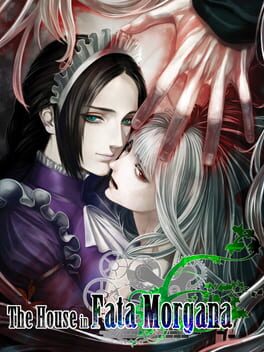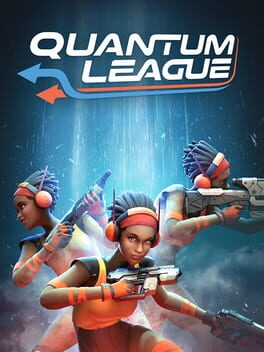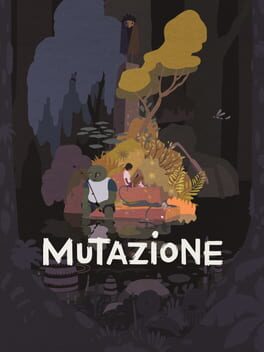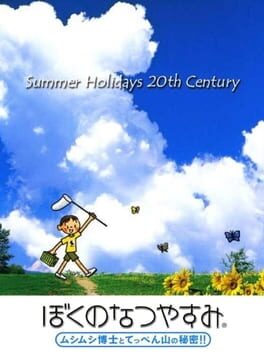rubenmg
2021
A game that is conscious about its shonen references but isn’t ashamed of them, rather uses their strength to irradiate the energy of being young. Rivals, superpowers and especially rebelling against what you are supposed to be and choosing who you want to be.
But that’s where the consciousness stops. Didn’t reflect too much about anime filler it seems. Something as crucial as the combat system is just sitting there. The most inanimate way to represent dodgeball, obviously blander with each filler encounter, but instead of rebuilding it from scratch, removing it, or at least reducing it, just more variations keep being added hoping to do the coverup. A juvenile talk about being yourself at the same time as it follows the rules of old just because of tradition.
But that’s where the consciousness stops. Didn’t reflect too much about anime filler it seems. Something as crucial as the combat system is just sitting there. The most inanimate way to represent dodgeball, obviously blander with each filler encounter, but instead of rebuilding it from scratch, removing it, or at least reducing it, just more variations keep being added hoping to do the coverup. A juvenile talk about being yourself at the same time as it follows the rules of old just because of tradition.
1998
Occasionally while playing this, I wished that a giant hand appeared in the middle of the screen. It would shake the current level, spin it, slap it, perform a first aid CPR, just to see if the game could exhale the slightest of the breaths or to try and hear the quietest heartbeat.
This never happens and rigidness reigns supreme. The holy unwritten book with the golden rules on how to make a Megaman is religiously followed. And you know those rules don’t work when something as the appearing blocks become a trademark of the series. When you ask these games to shake things up they respond: this is how Megaman games were done in the 80s, in the 90s and in the next thousand years. The robot that produces endless sequels for the infinite Megaman flavors struggles with entry data from the outside, only capable of generating new infinite subseries when this phenomenon occurs. Megaman games are only fed with other Megaman games.
And here we have the blue guy, he even brought a friend this time. They don't do too much, but they would like to do less. Running, jumping, sliding, shooting, everything seems boring to them, despite the honesty that could be considered in their simplicity. The enemies appear to be just as uninterested. When they throw an occasional weird behaviour into their being they don't last before remembering their work. Be a by the book obstacle and drop a reward when beaten. Everytime that we kill one of these it seems like they want us to beat the level more than ourselves, asking to please never respawn them again. They even give us better rewards each time that we kill them!
The cruel response to this plea from the developers is pushing you back with some checkpoints and making you do the whole level again if you run out of lives. I don't have a problem with repeating stuff. But if the first time going through a level is already uninteresting it's an easy guess how the 10th time will be. If anything, while cursing whoever made these dead levels, at least I dedicate my prayers to whoever invented savestates.
This never happens and rigidness reigns supreme. The holy unwritten book with the golden rules on how to make a Megaman is religiously followed. And you know those rules don’t work when something as the appearing blocks become a trademark of the series. When you ask these games to shake things up they respond: this is how Megaman games were done in the 80s, in the 90s and in the next thousand years. The robot that produces endless sequels for the infinite Megaman flavors struggles with entry data from the outside, only capable of generating new infinite subseries when this phenomenon occurs. Megaman games are only fed with other Megaman games.
And here we have the blue guy, he even brought a friend this time. They don't do too much, but they would like to do less. Running, jumping, sliding, shooting, everything seems boring to them, despite the honesty that could be considered in their simplicity. The enemies appear to be just as uninterested. When they throw an occasional weird behaviour into their being they don't last before remembering their work. Be a by the book obstacle and drop a reward when beaten. Everytime that we kill one of these it seems like they want us to beat the level more than ourselves, asking to please never respawn them again. They even give us better rewards each time that we kill them!
The cruel response to this plea from the developers is pushing you back with some checkpoints and making you do the whole level again if you run out of lives. I don't have a problem with repeating stuff. But if the first time going through a level is already uninteresting it's an easy guess how the 10th time will be. If anything, while cursing whoever made these dead levels, at least I dedicate my prayers to whoever invented savestates.
2020
Not only I’m interested in people telling the history of their places, away from the USA and Japan, in videogames, but here you also have at least the influence of an older person that I think it’s very necessary in a medium as juvenile as this. And sure, I can understand where some of the critiques of the game regarding a voyeur or a tourist approach come from, the end credits telling you that you don’t see the same thing in every playthrough and a scene selector with places locked behind a question sign unfortunately give weight to this argument. But ultimately, I think the game really comes from a more honest place. To have a touristic voyeur approach to these kinds of places we already have too many action games that disregard the rest of the world as cool setpieces at best or amusement parks at worst. To me the slow pace of your walking in Promesa seems to be a responsive contrast to such a fast paced careless view (maybe it’s representing someone who cannot move as fast anymore too).
Even thinking that Promesa is honestly interested in the places and histories that it contains, I also think that the game doesn’t trust those enough. Julián Palacios puts a lot of care into recreating something that is, or was, existent and habited. It’s when the game just puts you in a mundane place with mundane sounds in the background where I feel it achieves the most. The street that you walk each day or the home where you have lived for years tell more about the life of someone than anything else.
But in its insecurity of not believing in the inherent expressive strength of these places, numerous abstract sections will appear oftenly. Not only seeing a distorted view of the aforementioned real places while flying strips any of the mundane sense that there could be, but the evocative aspects are also a lot weaker in comparison. When you lose someone that has been living with you for all your life it isn’t hard because you see a floating dress in your dreams. It’s hard because you turn your head while sitting in your own home and you’ll notice that they are not there anymore.
Even thinking that Promesa is honestly interested in the places and histories that it contains, I also think that the game doesn’t trust those enough. Julián Palacios puts a lot of care into recreating something that is, or was, existent and habited. It’s when the game just puts you in a mundane place with mundane sounds in the background where I feel it achieves the most. The street that you walk each day or the home where you have lived for years tell more about the life of someone than anything else.
But in its insecurity of not believing in the inherent expressive strength of these places, numerous abstract sections will appear oftenly. Not only seeing a distorted view of the aforementioned real places while flying strips any of the mundane sense that there could be, but the evocative aspects are also a lot weaker in comparison. When you lose someone that has been living with you for all your life it isn’t hard because you see a floating dress in your dreams. It’s hard because you turn your head while sitting in your own home and you’ll notice that they are not there anymore.
2018
How interesting are the inhabited places. It is very easy to be impressed with the celestial aesthetic of the first city you visit, present both in the habitants clothes and also in the impossible colossal architecture, where air-sustained bridges envelop the monumental buildings with their curves. It is even more impressive that when you go to the human world the villages are even more interesting.
Contrary to some trends in RPGs, you get to know the life of a place not by intruding into other peoples houses, but just by contemplating their lives on the outside. What better occasion to know the customs of a new place than with a street market. A market that isn’t there for you, you can’t “interact” with most of the shops because you don’t need to. There you can see people gathering together doing some errands, some workers a bit farther away in the beautiful process of paint manufacturing, an old man telling riddles to little kids… Looking a bit more into it, it’s not just the people, but how the villages are very intelligently built around water. You have this first village that surrounds the side of a lake or the second one with an aqueduct system that provides a stream of water around all the houses.
But this is a fantasy RPG or something, so the inevitable time of adventure will come sooner or later. Where the villages irradiated charm just by showing how life went on in a natural way, the adventure sections are unable to hide their blatant lies even when they are set in a forest. The repetitive punchless combats, the uninteresting streamlined levels, the puzzles to add “variety”... This is, unfortunately, the focus of the game, what I mentioned before is a complement at most.
Contrary to some trends in RPGs, you get to know the life of a place not by intruding into other peoples houses, but just by contemplating their lives on the outside. What better occasion to know the customs of a new place than with a street market. A market that isn’t there for you, you can’t “interact” with most of the shops because you don’t need to. There you can see people gathering together doing some errands, some workers a bit farther away in the beautiful process of paint manufacturing, an old man telling riddles to little kids… Looking a bit more into it, it’s not just the people, but how the villages are very intelligently built around water. You have this first village that surrounds the side of a lake or the second one with an aqueduct system that provides a stream of water around all the houses.
But this is a fantasy RPG or something, so the inevitable time of adventure will come sooner or later. Where the villages irradiated charm just by showing how life went on in a natural way, the adventure sections are unable to hide their blatant lies even when they are set in a forest. The repetitive punchless combats, the uninteresting streamlined levels, the puzzles to add “variety”... This is, unfortunately, the focus of the game, what I mentioned before is a complement at most.
2007
(Played the PC version that isn’t exactly the same as Sigma as far as I know)
The first time you take control you are already in a battle. No button prompts, no combos explained, just smash the controller, play, discover, have fun. If somebody told me they did the Mario 64 thing of not developing a proper game until the main character felt amazing to play in an empty box I would believe it. This is so playful that, despite feeling designed to be able to go through with your first weapon only, they throw like a dozen of them more, why not, more toys.
There is no good action game with a moveset only, and the first 3 chapters of the game make sure to demonstrate how to make a top action game. The first common enemies are ninjas resembling Ryu, and will hunt his ass at every chance, actively and reactively. Not only will the enemies keep retaliating, but the surroundings will raise the tension too. In here constrained spaces have a special meaning, since yes, you are surrounded with deadly ninjas, but you are a ninja yourself, use that wall on your back and jump on it, run on it, redefine 3D action. And it doesn’t stop there, enemies won’t be waiting sitting, turning a corner could be a potential trap with a guy backflipping his sword towards your neck. The game even manages to play with your expectations, there is a section in chapter 3 where after killing some dudes from a distance you have to go where they were totally defenseless, with a single potential hit sending you to the void.
What is in chapter 4 and beyond then? The game losing inspiration. As new enemies are needed to keep the action fresh, ideas struggle. The most conventional enemies that supposed a big threat not long ago begin to be dispatched easily as a routine, expected after fighting the same guys a hundred times and with less challenging environments in every iteration. Worse than that, some demons seem to be incapable of holding up with Ryu’s incredible speed.
But when the game totally runs out of gas is at the middle of chapter 7. In here there is a scene where Ryu accidentally activates a curse. We see the dead rising, really big zombies accompanied by really big weapons. So, what is the defining characteristic of these guys that want to kill our lightspeed moving character so bad? That they move slowly. Like really slow, the slowest enemy that I can think of in any action game ever. It would pose some threat if you had to fight like surrounded by 10 of them I guess, but since this is the only time in the game where you can relax and prepare as many fully charged attacks as you want, Ryu’s deadliest technique, they just walk very slowly towards their death. Fortunately, after many endless fights with those guys, they stop appearing, but it has been made evident that inspiration is totally gone.
For the remaining 12 chapters, apart from bosses that already ranged from bad to very bad, the game introduces: bad first person shooting sections, bad water sections and even a bad 3D Zelda inspired dungeon gets its place too. Meanwhile some of the best new enemies are, new versions of old enemies but weaker? The best thing that can be said about the new things that keep being added desperately is that they don’t last too long, but a continuous sequence of the same lack of inspiration ends up tiring the same way.
I like how the game moves, a lot. I'm even thinking right now of playing again when I know that I will be let down after a few minutes. I just wish that the game constructed around such a character was just as good.
The first time you take control you are already in a battle. No button prompts, no combos explained, just smash the controller, play, discover, have fun. If somebody told me they did the Mario 64 thing of not developing a proper game until the main character felt amazing to play in an empty box I would believe it. This is so playful that, despite feeling designed to be able to go through with your first weapon only, they throw like a dozen of them more, why not, more toys.
There is no good action game with a moveset only, and the first 3 chapters of the game make sure to demonstrate how to make a top action game. The first common enemies are ninjas resembling Ryu, and will hunt his ass at every chance, actively and reactively. Not only will the enemies keep retaliating, but the surroundings will raise the tension too. In here constrained spaces have a special meaning, since yes, you are surrounded with deadly ninjas, but you are a ninja yourself, use that wall on your back and jump on it, run on it, redefine 3D action. And it doesn’t stop there, enemies won’t be waiting sitting, turning a corner could be a potential trap with a guy backflipping his sword towards your neck. The game even manages to play with your expectations, there is a section in chapter 3 where after killing some dudes from a distance you have to go where they were totally defenseless, with a single potential hit sending you to the void.
What is in chapter 4 and beyond then? The game losing inspiration. As new enemies are needed to keep the action fresh, ideas struggle. The most conventional enemies that supposed a big threat not long ago begin to be dispatched easily as a routine, expected after fighting the same guys a hundred times and with less challenging environments in every iteration. Worse than that, some demons seem to be incapable of holding up with Ryu’s incredible speed.
But when the game totally runs out of gas is at the middle of chapter 7. In here there is a scene where Ryu accidentally activates a curse. We see the dead rising, really big zombies accompanied by really big weapons. So, what is the defining characteristic of these guys that want to kill our lightspeed moving character so bad? That they move slowly. Like really slow, the slowest enemy that I can think of in any action game ever. It would pose some threat if you had to fight like surrounded by 10 of them I guess, but since this is the only time in the game where you can relax and prepare as many fully charged attacks as you want, Ryu’s deadliest technique, they just walk very slowly towards their death. Fortunately, after many endless fights with those guys, they stop appearing, but it has been made evident that inspiration is totally gone.
For the remaining 12 chapters, apart from bosses that already ranged from bad to very bad, the game introduces: bad first person shooting sections, bad water sections and even a bad 3D Zelda inspired dungeon gets its place too. Meanwhile some of the best new enemies are, new versions of old enemies but weaker? The best thing that can be said about the new things that keep being added desperately is that they don’t last too long, but a continuous sequence of the same lack of inspiration ends up tiring the same way.
I like how the game moves, a lot. I'm even thinking right now of playing again when I know that I will be let down after a few minutes. I just wish that the game constructed around such a character was just as good.
Remember the scene of the Simpsons where Milhouse is playing Bonestorm or something like that and the whole room is being blown away by the videogame? Some perceptive viewers will notice that fiction often lies, portraying impossible things like they were real. Obviously, the kid wasn’t playing Bonestorm, he was playing OutRun 2.
This is a game that goes way down when thinking about it coldly. The endings suck, the overall overflown of different cars, modes and variety of junk that no one wants sucks, and it even looks kind of ugly. And this is without comparing with the first OutRun!
So, very skeptical, I played the game again. Since the only version that I played was in the arcade and the ways of playing the game today seem to suck because preservation of videogames is a joke, I expected the game to be much worse than before. And after messing around with a horrible port of OutRun 2006 there it is, uglier and now with more crap because it is now a home release or something.
Then I go to the mode that seems more arcady without thinking too much and… forget about everything. As soon as the engine begins to sound you know that you cannot occupy your mind with the distractions that the game will even actively throw at you constantly, if you think you lose. Now, if in the first OutRun you needed to have a little of care with your speed to avoid ruining your run by crashing into a car or out of the road, the sequel (or whatever it is at this point) goes like “you see those cars in front? Go wreck them if you need to, don’t let anything turn your engine below from 5”.
I could bring up a never ending list of why humans are the most stupid living creatures in the universe. Fortunately, not all reasons are bad. Somehow, when we see that cars lose their direction when they make a hard turn at great speeds, instead of being in absolute terror of the chaotic consequences of these machines we go and find a way to make that cool. Seeing a car at 300 km/h while turned on its side makes us go back to the most idiots of monkeys, enthusiastic for a few minutes to the point that we start sweating while sitting down. A car destroying physics and pushing away its obstacles like they were made of paper. Is it possible for the fakest of the cars to just go drifting and make you shake your body every single time? The reason says no, reality says otherwise.
This is a game that goes way down when thinking about it coldly. The endings suck, the overall overflown of different cars, modes and variety of junk that no one wants sucks, and it even looks kind of ugly. And this is without comparing with the first OutRun!
So, very skeptical, I played the game again. Since the only version that I played was in the arcade and the ways of playing the game today seem to suck because preservation of videogames is a joke, I expected the game to be much worse than before. And after messing around with a horrible port of OutRun 2006 there it is, uglier and now with more crap because it is now a home release or something.
Then I go to the mode that seems more arcady without thinking too much and… forget about everything. As soon as the engine begins to sound you know that you cannot occupy your mind with the distractions that the game will even actively throw at you constantly, if you think you lose. Now, if in the first OutRun you needed to have a little of care with your speed to avoid ruining your run by crashing into a car or out of the road, the sequel (or whatever it is at this point) goes like “you see those cars in front? Go wreck them if you need to, don’t let anything turn your engine below from 5”.
I could bring up a never ending list of why humans are the most stupid living creatures in the universe. Fortunately, not all reasons are bad. Somehow, when we see that cars lose their direction when they make a hard turn at great speeds, instead of being in absolute terror of the chaotic consequences of these machines we go and find a way to make that cool. Seeing a car at 300 km/h while turned on its side makes us go back to the most idiots of monkeys, enthusiastic for a few minutes to the point that we start sweating while sitting down. A car destroying physics and pushing away its obstacles like they were made of paper. Is it possible for the fakest of the cars to just go drifting and make you shake your body every single time? The reason says no, reality says otherwise.
2020
Static places that are already fixed in time and space, is photography worthless there? Well, there comes perspective as a way of reinterpreting those places, emphasizing what the photographer considers most important.
But before the player can put their subjective view there are objectives to complete. While a weird decision, to say the least, I can welcome the developers giving a guiding hand to help lazier people (like me) in appreciating the details of these spaces. But what is it that the developers emphasize with these objectives? I’m sorry but I hope it is understandable that I don’t really have much energy left after making me shoot “a text that reads 'Property of the UN' in a sarcastic tone” or “a picture that contains ‘Gamer’ at least 7 times” (I don’t need to search for neoliberalism when it is all over the place), applying some filters to the photos, doing all of that hopefully in less than 10 minutes and then getting paid some money.
At least after that I can give it a rest and now take on a more free view of the stages. But I’m still unconvinced. The world is ending so I get the carefree youth trying to enjoy what they have left with the 15 years old nihilism written on the walls, I’ll let that slip. The critique of the world capitalizing the worst disaster even when the world is about to end is neat, definitely shows that the game was developed through 2020. The critique to cops and military forces? That’s another story. Countless messages written on walls denouncing how bad cops are and how hollow it ends up being a soldier. But then you turn around and what are these supposedly bad forces doing? Soldiers fighting the aliens with all they have in order to protect humanity? I understand the duality between the youth that has already accepted the end and the forces that refuse to give up, but neither of them are exactly doing anything bad, just dealing with the inevitable as best as they can.
What is left? I’ll go and ignore everything and take a picture of all my friends, nothing can take that away no matter when and where. Everyone on frame... 3, 2, 1…
“3.17$ COLORFUL DETAILED FISH EYE GROUP”
But before the player can put their subjective view there are objectives to complete. While a weird decision, to say the least, I can welcome the developers giving a guiding hand to help lazier people (like me) in appreciating the details of these spaces. But what is it that the developers emphasize with these objectives? I’m sorry but I hope it is understandable that I don’t really have much energy left after making me shoot “a text that reads 'Property of the UN' in a sarcastic tone” or “a picture that contains ‘Gamer’ at least 7 times” (I don’t need to search for neoliberalism when it is all over the place), applying some filters to the photos, doing all of that hopefully in less than 10 minutes and then getting paid some money.
At least after that I can give it a rest and now take on a more free view of the stages. But I’m still unconvinced. The world is ending so I get the carefree youth trying to enjoy what they have left with the 15 years old nihilism written on the walls, I’ll let that slip. The critique of the world capitalizing the worst disaster even when the world is about to end is neat, definitely shows that the game was developed through 2020. The critique to cops and military forces? That’s another story. Countless messages written on walls denouncing how bad cops are and how hollow it ends up being a soldier. But then you turn around and what are these supposedly bad forces doing? Soldiers fighting the aliens with all they have in order to protect humanity? I understand the duality between the youth that has already accepted the end and the forces that refuse to give up, but neither of them are exactly doing anything bad, just dealing with the inevitable as best as they can.
What is left? I’ll go and ignore everything and take a picture of all my friends, nothing can take that away no matter when and where. Everyone on frame... 3, 2, 1…
“3.17$ COLORFUL DETAILED FISH EYE GROUP”
Saints and witches, angels and demons, blessed and cursed… contraries that are true depending on the perspective, but that turn out to be false in the overall image. Behind those labels, made up to simplify complexities, there are just regular people and their circumstances.
Discrimination for one’s gender, racism, greed, honor, class differences… many unfortunate events may push someone into doing harm to get away, taking into account all of the perspectives there is really not one true evil to point the finger at and to condemn. Does this excuse anyone from hurting? It doesn’t. Having to sacrifice others is never an option, it may seem like it sometimes, but at that same moment the damage is done for not even considering a way to protect everyone as the only real choice. Should there be vengeance upon those who hurt? Not either. Trying to pay with the same coin not only creates the well known never ending cycle, as other people get caught in the consequences escalating the conflict into eternity, but the own person who seeks vengeance ends up trapped, unable to find their own peace, arguably suffering more than anyone else. The proper penance is not receiving the damage dealt back, it is compromising and being active towards changing for the best.
A game with so much tragedy and suffering can be deceiving at first. Everything will end up the worst way possible, the characters, even with their reasons, seem to make all the wrong choices, hundreds of years pass on with very few hints of hope that is slowly vanishing. But the game never rejoices in said suffering, it is there to make us understand every perspective properly, but always treated carefully, conscious of what is shown and how. Where the game rejoices, be it on the scarce illustrations and especially in the extended romantic narrations, is in the more tender moments.
A “chapter” stands out as a pillar in the middle of the story where the true heart is revealed. Only two people, trapped, who went through a lot of suffering, being betrayed by those who were closest to them at some point, unable to trust anymore. It is because they share stigmas upon them that they can, ironically, understand each other so well. From there on the relationship just flourishes in mundane and beautiful ways, talking every day, picking some flowers in the garden, playing chess, reading a book together, a declaration of love that slips through the tongue…
Forgiveness, of oneself and therefore towards those who hurt you, is a long process, it cannot be granted so easily. The first step is listening. This is no easy task for any side, the one who has to tell also has trouble opening the doors that were shut in order to forget, but said doors cannot stay closed, the past cannot be forgotten, even if it hurts. Only upon sharing and understanding, the fairy tales will come down and reality can be taken on. The past cannot be changed, the damage is done, but for that same reason we must do our best from there on. To have faith and to be our best as we push forward for a better future.
Discrimination for one’s gender, racism, greed, honor, class differences… many unfortunate events may push someone into doing harm to get away, taking into account all of the perspectives there is really not one true evil to point the finger at and to condemn. Does this excuse anyone from hurting? It doesn’t. Having to sacrifice others is never an option, it may seem like it sometimes, but at that same moment the damage is done for not even considering a way to protect everyone as the only real choice. Should there be vengeance upon those who hurt? Not either. Trying to pay with the same coin not only creates the well known never ending cycle, as other people get caught in the consequences escalating the conflict into eternity, but the own person who seeks vengeance ends up trapped, unable to find their own peace, arguably suffering more than anyone else. The proper penance is not receiving the damage dealt back, it is compromising and being active towards changing for the best.
A game with so much tragedy and suffering can be deceiving at first. Everything will end up the worst way possible, the characters, even with their reasons, seem to make all the wrong choices, hundreds of years pass on with very few hints of hope that is slowly vanishing. But the game never rejoices in said suffering, it is there to make us understand every perspective properly, but always treated carefully, conscious of what is shown and how. Where the game rejoices, be it on the scarce illustrations and especially in the extended romantic narrations, is in the more tender moments.
A “chapter” stands out as a pillar in the middle of the story where the true heart is revealed. Only two people, trapped, who went through a lot of suffering, being betrayed by those who were closest to them at some point, unable to trust anymore. It is because they share stigmas upon them that they can, ironically, understand each other so well. From there on the relationship just flourishes in mundane and beautiful ways, talking every day, picking some flowers in the garden, playing chess, reading a book together, a declaration of love that slips through the tongue…
Forgiveness, of oneself and therefore towards those who hurt you, is a long process, it cannot be granted so easily. The first step is listening. This is no easy task for any side, the one who has to tell also has trouble opening the doors that were shut in order to forget, but said doors cannot stay closed, the past cannot be forgotten, even if it hurts. Only upon sharing and understanding, the fairy tales will come down and reality can be taken on. The past cannot be changed, the damage is done, but for that same reason we must do our best from there on. To have faith and to be our best as we push forward for a better future.
2021
The concept is one of those “wouldn’t be cool if…” that turns out to be… pretty cool! Add some good enough levels and weapons, no need to reinvent the wheel, and that’s everything needed.
Now comes the tragedy of an online game that very few play. At least the game was focused in the 1v1 since the beginning, but to be honest I find the coordination between 2 and their chaotic clones funnier. Anyway, I’m no expert in marketing or anything like that, so I’m sure the decisions taken were better than anything I could’ve come up with, like say the aesthetic very “esports” focused that doesn’t particularly appeal to me, but it’s fine as long as more people come and play.
Then there are some… other decisions. One of the changes that surprised me the most since the first beta was that the draw resolution changed. What was a nice twist on the sudden death, making time resume instead of resetting the loop, tightening the tension as less healings are available and you or your opponent may be left in a compromising state, thinking way ahead on what to do in the due time, now is… still here, but only on rankeds? Don’t know how taking that out and making a boring loop restart that could drag forever makes it more friendly or anything for casual matches.
I think the last big addition are the abilities of the characters that all seem to be very weak. The best thing you could say is that at least it doesn’t change the game too much, but if they keep adding stuff at random in search of a magic click my interest will die quicker than the game itself.
Now comes the tragedy of an online game that very few play. At least the game was focused in the 1v1 since the beginning, but to be honest I find the coordination between 2 and their chaotic clones funnier. Anyway, I’m no expert in marketing or anything like that, so I’m sure the decisions taken were better than anything I could’ve come up with, like say the aesthetic very “esports” focused that doesn’t particularly appeal to me, but it’s fine as long as more people come and play.
Then there are some… other decisions. One of the changes that surprised me the most since the first beta was that the draw resolution changed. What was a nice twist on the sudden death, making time resume instead of resetting the loop, tightening the tension as less healings are available and you or your opponent may be left in a compromising state, thinking way ahead on what to do in the due time, now is… still here, but only on rankeds? Don’t know how taking that out and making a boring loop restart that could drag forever makes it more friendly or anything for casual matches.
I think the last big addition are the abilities of the characters that all seem to be very weak. The best thing you could say is that at least it doesn’t change the game too much, but if they keep adding stuff at random in search of a magic click my interest will die quicker than the game itself.
2016
Solve puzzles to open doors, touch fish to get a boost, collect all the hidden liberated animals, stare at the “lore” written on the walls, avoid the dangerous evil mines that will… uhhh stunt you for a second, ally with the shark as an act of gratitude because you… ??? and my favourite one, as explicitly shown in the game, “press the button to meditate”.
Add some mystified imposted epicness to every little detail instead of humbly showing the poor living creatures and it becomes clear that the environmental concern for the ocean is just an aesthetic, a façade.
Add some mystified imposted epicness to every little detail instead of humbly showing the poor living creatures and it becomes clear that the environmental concern for the ocean is just an aesthetic, a façade.
2019
You take control of Kai, a girl that goes to a small village to see her ill grandfather. From this perspective the introduction to the neighbours of Mutazione goes very smoothly, both to the player and to Kai, new to the place but with some connections tied to the girl's family that lets the conversations go a bit further from casual chitchat.
The problem comes when the game tries to develop the cast of Mutazione. Most of the characters will tell their deepest worries and secrets, declarations never told to anyone before, to Kai in just a few days of barely knowing each other. The problem with the game sticking to Kai's perspective only starts there. Some of the more emotional moments of the game come from conversations between the neighbours that shouldn't concern our main character because of their deeply emotional and personal nature. However, this emotion is totally lost by voyeurism, with Kai always on frame breaking into other's intimacy without any care. The game is afraid that the emotions will not be carried on in the aftermath if we are not present at every moment.
The problem comes when the game tries to develop the cast of Mutazione. Most of the characters will tell their deepest worries and secrets, declarations never told to anyone before, to Kai in just a few days of barely knowing each other. The problem with the game sticking to Kai's perspective only starts there. Some of the more emotional moments of the game come from conversations between the neighbours that shouldn't concern our main character because of their deeply emotional and personal nature. However, this emotion is totally lost by voyeurism, with Kai always on frame breaking into other's intimacy without any care. The game is afraid that the emotions will not be carried on in the aftermath if we are not present at every moment.
2016
As someone who doesn't appreciate the original that much nowadays, this made me retroactively reconsider the qualities of the first game.
Comparisons are odious, but not only this is (partially) a remake, the game keeps throwing references to past entries, so ignoring the context would really need a lot of will. The weird thing is that the game seems to take the worst from the first entry and throw out the good stuff. I didn't notice until playing this one, but the original Ratchet and Clank had some genuinely funny dialogues, every scene managed to add a bit of flavor to the overall adventure. In the new game it seems like nobody wanted to develop this, everyone sounds bored, the infobots videos are all forgettable, you'll curse the guy who invented dialogs during gameplay. Hell, I don't think that Ratchet and Clank actually talk between themselves more than 4 or 5 times, do they even know each other by the end of the adventure?
I would try to keep the visual aspect on the "personal" terrain, I still think that the original game made environments that suggested more life beyond the game horizons than this generic sci-fi filtered look, but that may be memories from when I was a kid. What is not a trick from nostalgia is how the new visual style is straightforward eye-painful. Especially in the night levels, the led saturation makes the game really hard to look at for a few minutes, like trying to read a scenary oversaturated with junk wasn't hard enough.
What ends up bothering me the most is how the game shows briefly some good qualities in ways that never dares to take seriously. Using an unreliable narrator could bring up some nice variety and surprises, it is hinted in a joke where Quark says: "and then a dinosaur appeared" but is quickly cut. Why not show a dinosaur? Traveling between planets should already give enough freedom to put whatever funny nonsense comes to mind. I was also surprised with the level where you can freely fly and explore (I think the exploration is what I liked the most). It's a nice reinterpretation of Clank's whateveriscalled rocket power up, but then the game goes and shuts that idea into a single planet and a few more punctual exceptions. When some fun is accidentally added there is always a quick response with an apology.
Comparisons are odious, but not only this is (partially) a remake, the game keeps throwing references to past entries, so ignoring the context would really need a lot of will. The weird thing is that the game seems to take the worst from the first entry and throw out the good stuff. I didn't notice until playing this one, but the original Ratchet and Clank had some genuinely funny dialogues, every scene managed to add a bit of flavor to the overall adventure. In the new game it seems like nobody wanted to develop this, everyone sounds bored, the infobots videos are all forgettable, you'll curse the guy who invented dialogs during gameplay. Hell, I don't think that Ratchet and Clank actually talk between themselves more than 4 or 5 times, do they even know each other by the end of the adventure?
I would try to keep the visual aspect on the "personal" terrain, I still think that the original game made environments that suggested more life beyond the game horizons than this generic sci-fi filtered look, but that may be memories from when I was a kid. What is not a trick from nostalgia is how the new visual style is straightforward eye-painful. Especially in the night levels, the led saturation makes the game really hard to look at for a few minutes, like trying to read a scenary oversaturated with junk wasn't hard enough.
What ends up bothering me the most is how the game shows briefly some good qualities in ways that never dares to take seriously. Using an unreliable narrator could bring up some nice variety and surprises, it is hinted in a joke where Quark says: "and then a dinosaur appeared" but is quickly cut. Why not show a dinosaur? Traveling between planets should already give enough freedom to put whatever funny nonsense comes to mind. I was also surprised with the level where you can freely fly and explore (I think the exploration is what I liked the most). It's a nice reinterpretation of Clank's whateveriscalled rocket power up, but then the game goes and shuts that idea into a single planet and a few more punctual exceptions. When some fun is accidentally added there is always a quick response with an apology.
2000
Where videogames usually tend to go for escapism and fantasy to reconnect with the sense of wonder, with innocence, with freedom... Boku no Natsuyasumi finds all of that in a more down to earth context. Every day is an adventure, there is no need for magic or silly objectives, exploring in the countryside, catching some bugs, watering flowers until they bloom… No wonder why at the end of each day the game asks you if you want to keep playing, it seems like it’s asking at the same time if you don’t want to go out and enjoy your own surroundings.
Despite being set in the 70’s, Boku no Natsuyasumi avoids falling into prison with nostalgia. Rather than keeping you trapped in an endless summer full of joy, the calendar is always moving forward and the days fly by, just as when we were kids. And there are some rough edges too, even if the game is always looking through the eyes of innocence. Between the fun of summer days there is space to talk about deciding what to do in the future, dealing with moving away from your family, the memories of a not so distant war, the grief of losing a dear one too soon… And of course, a never repeated summer cannot end in any other way but with an emotional goodbye, nothing left but memories, but nothing else needed anyway.
Despite being set in the 70’s, Boku no Natsuyasumi avoids falling into prison with nostalgia. Rather than keeping you trapped in an endless summer full of joy, the calendar is always moving forward and the days fly by, just as when we were kids. And there are some rough edges too, even if the game is always looking through the eyes of innocence. Between the fun of summer days there is space to talk about deciding what to do in the future, dealing with moving away from your family, the memories of a not so distant war, the grief of losing a dear one too soon… And of course, a never repeated summer cannot end in any other way but with an emotional goodbye, nothing left but memories, but nothing else needed anyway.
The only Tony Hawk that manages to take most of the good parts of skating. The only thing that keeps it away from the 5 stars are the competitions. Why should skaters compete against each other in such artificial spaces? I guess that's the "Pro" part of the title. The game is at its best when it reinterprets the mundane through the eyes of exaggerated skate. It feels liberating taking spaces such as a school or a shopping mall and making them places of self expression.
Most of the interesting qualities of the game were lost already in THPS2. While in the first game objectives were scarce and your reward were VHS tapes, the second game introduces money, both inside the levels as floating dollar bills and by completing objectives. Worse than that, that money is what makes your skater grow, while in the first game the stats just went up naturally as you played. From now on the spaces were not common mundane locations, now the skaters are touring around the world. The worst level in Tony Hawk 2 is the one on the beach where one of your objectives is doing ollies over a bum multiple times (to get money, I remind you). What happened with the game that asked you to destroy police cars instead?
Tony Hawk 3 fixes the fuck up of the money (you still gain abstract points that are money, but at least they are not literal), but keeps the tourist approach and still messes the objectives. Some of the objectives were about impressing other skaters or impressing some girls on bikini inside of a yatch. What happened to self expression? Now we skate to look cool in front of others?
Most of the interesting qualities of the game were lost already in THPS2. While in the first game objectives were scarce and your reward were VHS tapes, the second game introduces money, both inside the levels as floating dollar bills and by completing objectives. Worse than that, that money is what makes your skater grow, while in the first game the stats just went up naturally as you played. From now on the spaces were not common mundane locations, now the skaters are touring around the world. The worst level in Tony Hawk 2 is the one on the beach where one of your objectives is doing ollies over a bum multiple times (to get money, I remind you). What happened with the game that asked you to destroy police cars instead?
Tony Hawk 3 fixes the fuck up of the money (you still gain abstract points that are money, but at least they are not literal), but keeps the tourist approach and still messes the objectives. Some of the objectives were about impressing other skaters or impressing some girls on bikini inside of a yatch. What happened to self expression? Now we skate to look cool in front of others?

